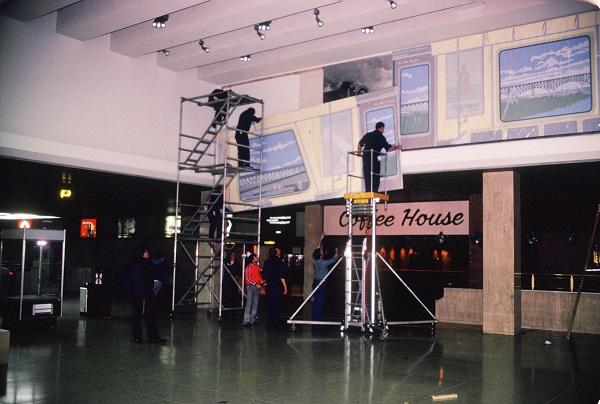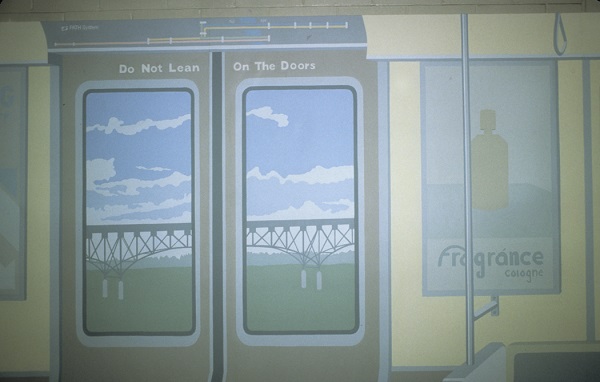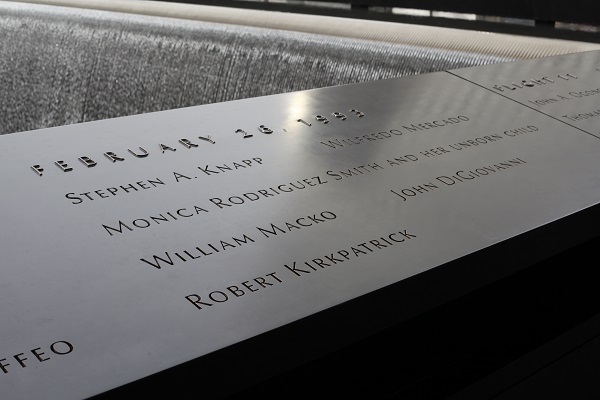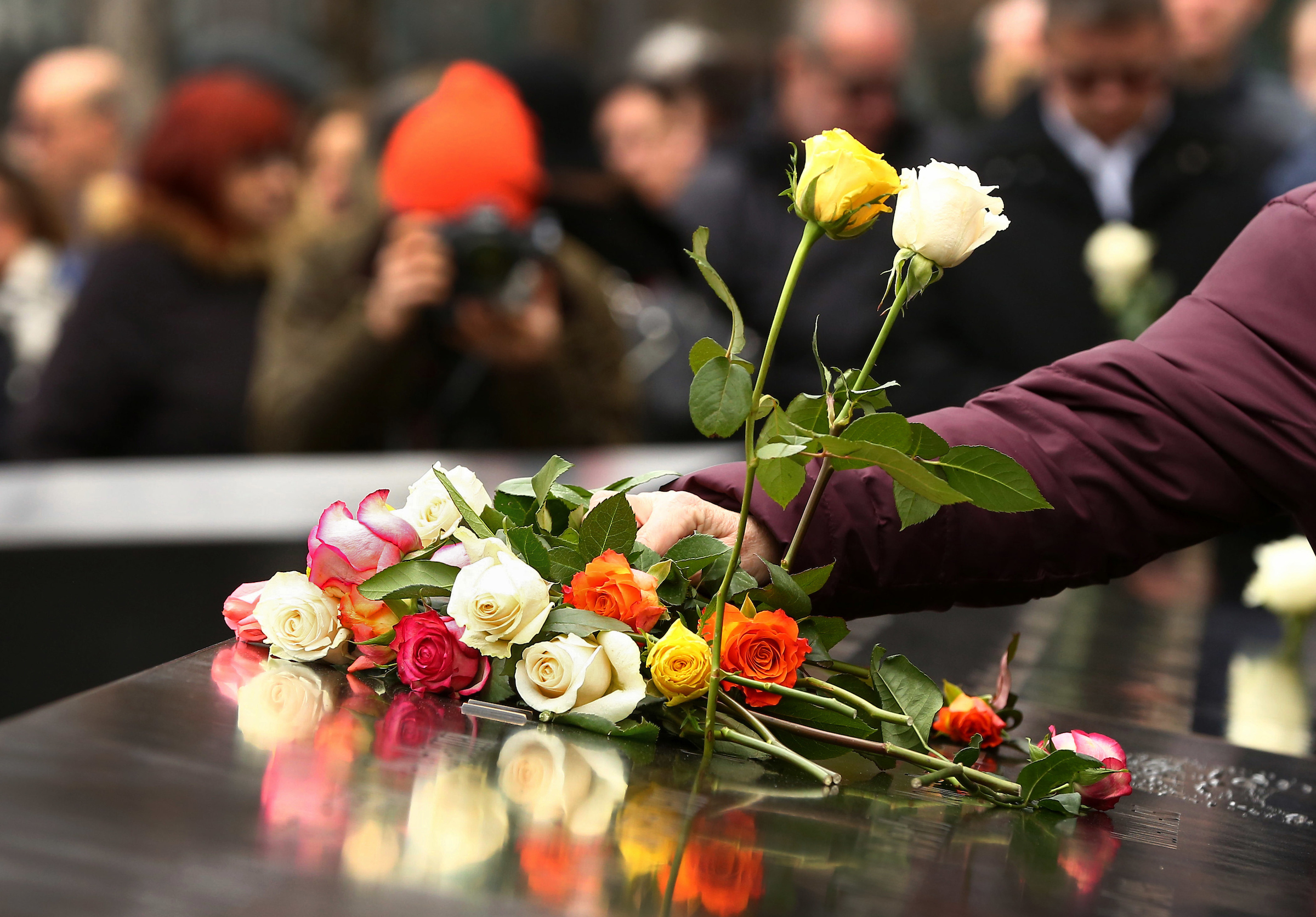Remembering “Commuter Landscape,” a PATH Station Mural Destroyed in the 1993 World Trade Center Bombing
Remembering “Commuter Landscape,” a PATH Station Mural Destroyed in the 1993 World Trade Center Bombing

For artist Cynthia Mailman, winning a public art competition to paint a 54-foot-long mural ringing the walls of the World Trade Center PATH train terminal was providential. It was the late-1970s, when the country was in a recession and New York City was running out of money.
Mailman recalls being “totally, totally broke” herself but enamored with the elegance of the Twin Towers, which had just opened in 1973. She remembers often taking visitors to the Observation Deck, and she attended several weddings at Windows on the World.
The competition – sponsored by the Cultural Council Foundation CETA Artists Project, a federally funded employment program for artists founded during the late 1970s – awarded her with a $10,000 stipend, health insurance and a windowless working studio in the sub-basement of the World Trade Center, near the maintenance divisions and mechanical rooms.
Despite the lack of natural lighting, Mailman was cheered by the subterranean studio space. “I was totally comfortable there,” she said in an oral history recorded by the 9/11 Memorial Museum. “It was a lovely, private space that locked up at night. I could leave my paints, I could leave everything.”
Always talkative and friendly, Mailman made the acquaintance of maintenance workers, police officers, newspaper sellers and food vendors stationed around the World Trade Center. She remembers Port Authority officials often brought VIP guests to see her working on the mural.
For inspiration for the mural, to be titled “Commuter Landscape,” Mailman spent days riding the PATH train into New Jersey, taking photos and making sketches of the scenery. Though she describes herself as ecologically-minded and a nature lover, she was drawn to the imagery of hulking infrastructure, like the Pulaski Skyway, that the PATH passed each day. The juxtaposition of industry and technology and the natural world animated her design for “Commuter Landscape” and continues to be a major theme in her artwork.

For about a year, Mailman and several artist apprentices – Diane Cabouli, Sarita Silver and Wendy White – toiled nights, weekends and holidays in the basement studio. The mural had to be completed in sections, as it would be impossible to move the more than 50-foot-long artwork from the basement studio to the PATH terminal in one piece. Vertical elements within the work purposefully hid the seams where the mural had to be divided.
Mailman used broad, flat blocks of almost pastel shades of paint to create a vibrant depiction of technology and transportation cutting through and changing the natural environment. The resulting mural showed a natural lushness.
“It really is that gritty world,” said Mailman. “But it’s kind of people-less, bird-less, very serene, so that the sky and the clouds are just as serene as the smokestacks, although of course we know they aren’t.”
Mailman said she wanted the mural to perk up commuters, who might have grown oblivious to the untended landscape found around the PATH train. She wanted “to show them this enlarged view of the world that they maybe aren’t even seeing. Because we go through the world, and sometimes we look but we don’t see.”
On Feb. 26, 1993, Mailman was at home in Staten Island when she heard about a bombing at the World Trade Center on television. She knew the wall onto which the mural was attached in the PATH train terminal abutted the parking garage where the bomb had exploded.
She immediately began calling her contacts at the World Trade Center to try to find out what happened, to no avail. Two days later, Mailman and her husband took it upon themselves to drive to the towers to discover the fate of the mural. They bypassed the police and snuck into the PATH terminal via the World Trade Center basement. Once there they saw that the area where the mural had greeted PATH commuters for more than a decade had been swept clean of any remnant of the artwork.
“I wanted to find the teeniest scrap of the canvas,” said Mailman. Unfortunately, a police officer who knew Mailman from her time working in the sub-basement confirmed that the mural had been destroyed.
She was devastated, and recalls breaking down immediately on realizing the mural had been “blown to smithereens,” she said. Mailman quickly put the loss into perspective – the loss of human life was more significant.
Wendy White, one of the apprentices who assisted Mailman with painting the mural, mourned the loss of the work. In an oral history recorded by the 9/11 Memorial Museum, White recalled how tragic an outcome it was for a young artist. “It was rather sad, in that I thought that art lasts forever,” she said.
Although “Commuter Landscape” was visible to the public for only around 14 years, Mailman hopes the mural had a marked impact on how New Yorkers view the environment. “I wanted my paintings to say something to people about saving the natural world for the coming generations,” she said. “Sometimes if you say something softly, or if you are subtle about it, then sometimes people say, ‘Wow, maybe I should think about that.’”
By Anne Dellinger, Digital Content Manager, 9/11 Memorial & Museum
Previous Post
A Timeline: February 26, 1993

On the morning of Feb. 26, 1993, about 50,000 people were in the World Trade Center complex, with more than 40,000 people in the Twin Towers.
Next Post
25th Anniversary of the 1993 World Trade Center Attack Commemorated

The families of victims, survivors, downtown residents and city and state officials gathered at the 9/11 Memorial plaza on Monday to mark the 25th anniversary of the 1993 World Trade Center bombing with a moment of silence, the tolling of a bell and the reading of the names of the six victims of the first terror attack at the site.